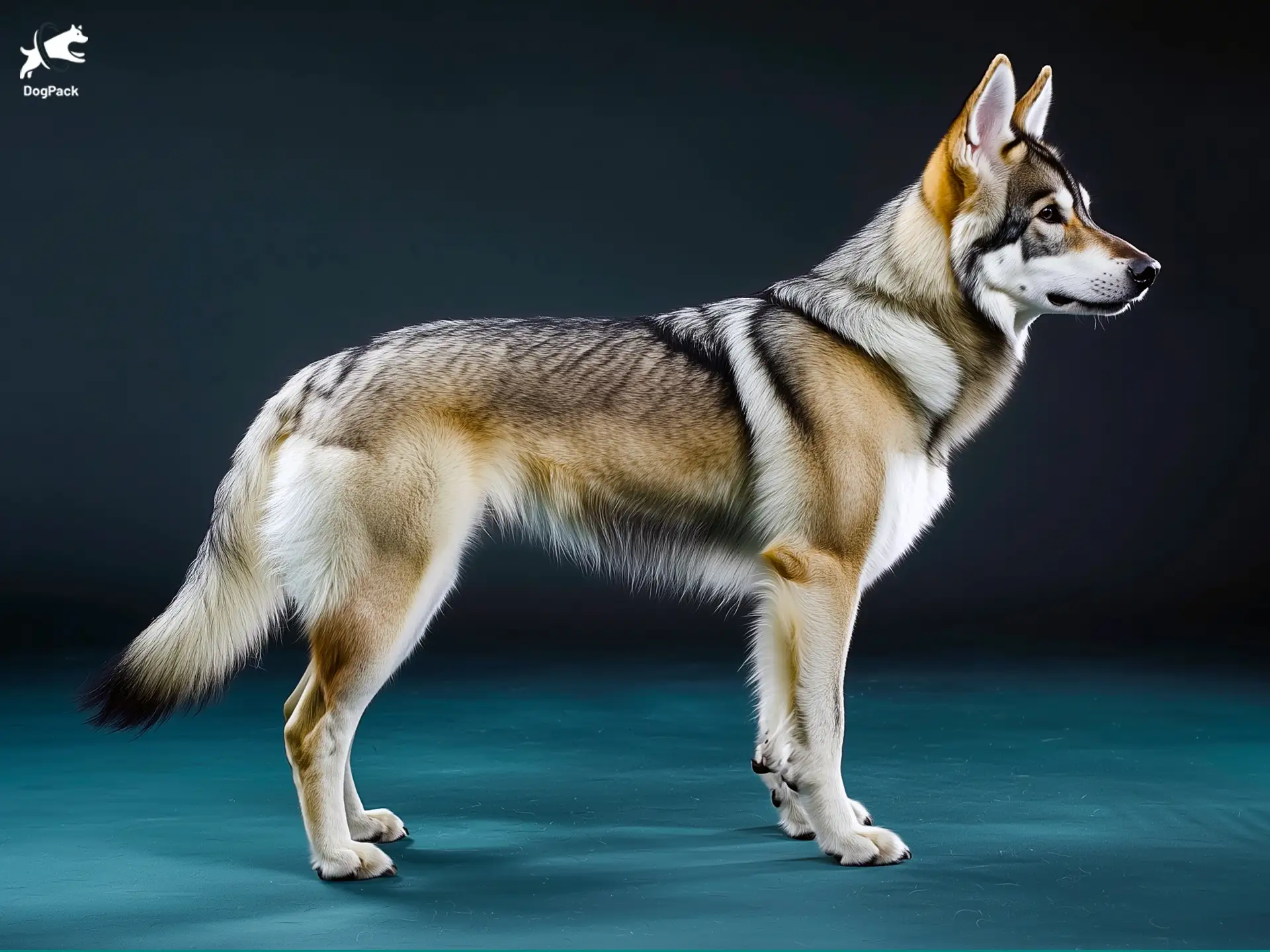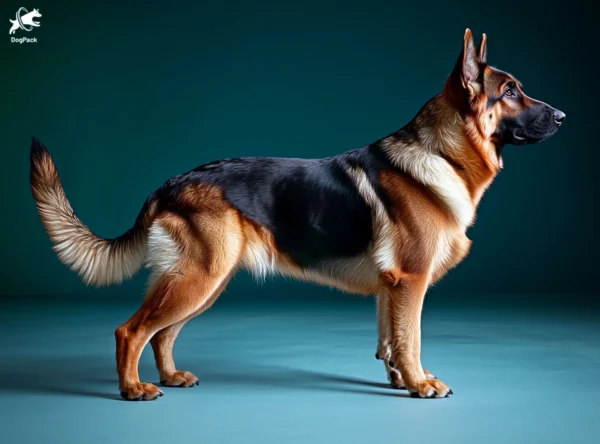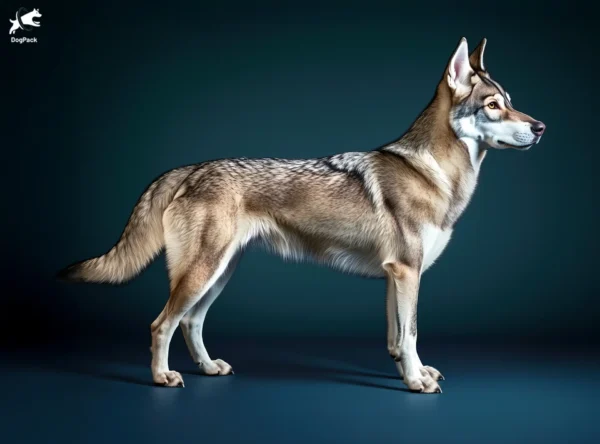Kunming dog Breed Info & Overview
The Kunming Wolfdog, sometimes called the Chinese Wolfdog, is a large working breed developed in 1950s China for military service. Combining German Shepherd brains with a wolfish look, these dogs are loyal, trainable and intensely energetic. Rare outside their homeland, they make dedicated companions for experienced owners who love adventure.
Characteristics
Pictures
Breed History
The Kunming Wolfdog traces its roots to a post‑World War II breeding program in China. Chinese military breeders mixed local village dogs with imported German Shepherds and, according to some tales, even a few wolves. The project launched in Kunming during the 1950s and gave the breed its name.
Records show that ten experimental army dogs were brought from Beijing and bred with more than fifty local household dogs and forty working dogs from Guiyang. From this diverse group, twenty promising pups were selected and later crossed with German imports, giving the resulting line both brains and brawn. This selective breeding created a fearless and adaptable dog.
By the 1980s their type and temperament had stabilized, and in 1988 the Chinese Public Security Bureau officially recognized the Kunming Dog as a distinct breed. The breed served in the Vietnam War as search‑and‑rescue dogs and guard sentries. Today they remain rare outside China, where they’re still prized by police and military handlers.
Temperament, Personality
The Kunming Wolfdog is clever and courageous. A friend’s dog once opened a baby gate to rescue his favorite squeaky toy, then dutifully returned it as if it were top‑secret contraband. Loyalty and a sense of duty seem baked into their DNA.
Properly socialized, these dogs can be affectionate with children and even tolerant of smaller pets, but their protective streak means they will always keep an eye on strangers. Establishing yourself as the pack leader is essential; otherwise they may assume that role and reorganize your household like a canine corporate takeover.
Expect a working dog mentality. They crave challenging tasks and lots of exercise, and if you don’t provide it they’ll invent their own jobs—sometimes involving your shoe collection. Their independence means they’re not clingy, but they need mental engagement to stop boredom and mischief. A daily puzzle toy can save your sneakers from unintended remodeling.
Physical Characteristics
Physically, the Kunming Wolfdog looks like a German Shepherd that just finished a CrossFit session. They stand around 25–27 inches tall and weigh between 66 and 84 pounds. Their backs are straight instead of sloped, their build is lean, and their tails curl up when excited as if they’re always ready for action.
Coats are short and dense with the classic black saddle pattern and a palette ranging from straw gold to deep rust. Almond‑shaped eyes and a long muzzle give them a wolfish look without the wildness. Don’t be surprised when people stop you to ask what movie you hired your dog from.
Underneath the shiny coat is a thick undercoat that insulates them against cold weather. While males and females are similar in size, males can be slightly broader in the chest. In summer they shed heavily, so be prepared for seasonal snowstorms of fur and invest in a good lint roller.
Health Issues
Although generally robust, this breed isn’t invincible. Potential health problems include hip dysplasia, degenerative myelopathy, progressive retinal atrophy, von Willebrand disease, epilepsy, diabetes and other endocrine disorders. They can also suffer from bloat, intervertebral disk disease, osteochondritis dissecans, panosteitis and annoying skin allergies. Early detection, prevention and responsible breeding make a big difference.
One of the best things you can do is keep your dog trim and fit. Hip dysplasia has both genetic and environmental triggers; studies show that overfeeding puppies drastically increases risk. Divide daily food into two meals, discourage wolfing it down, and avoid vigorous exercise right before or after eating to reduce bloat risk.
Schedule annual veterinary check‑ups and consider regular eye exams and joint screenings. Many owners also supplement with omega‑3 fatty acids, joint-support formulas or probiotics, but always consult your vet. Pay attention to subtle changes; if your usually energetic dog seems sluggish or stiff, treat it like a red flag rather than a lazy Sunday.
Grooming Needs
Compared with some shaggy breeds, the Kunming Wolfdog is a breeze to groom. Their short double coat only needs a good brushing once or twice a week to remove loose hairs and distribute oils. Seasonal shedding peaks in summer, so plan on more frequent brushing unless you want to knit a sweater from loose fur.
Despite the “wolfdog” name, these dogs aren’t hypoallergenic; dander and saliva can trigger allergies. Shedding is moderate most of the year and heavy during seasonal molts. Regular brushing helps reduce tumbleweeds of hair, keeps their skin healthy and gives you a chance to check for fleas, ticks or skin irritations.
Bathing can be kept to a few times a year, unless your companion rolls in something unspeakable. Trim nails regularly, clean ears to prevent infections and brush teeth for fresh breath. Turn grooming into a bonding session with treats and praise; the more positive it is, the easier it becomes for both of you.
Exercise Requirements
If you’re a runner, hiker or cyclist, the Kunming Wolfdog will happily be your training partner. They are high‑energy dogs and need at least one to two hours of exercise every day. A quick stroll around the block won’t cut it; think along the lines of mountain hikes, long jogs and brain games.
In addition to physical workouts, these dogs excel at activities that challenge their minds. Scent trails, agility courses and advanced obedience keep them sharp and satisfied. Their history as search‑and‑rescue dogs means they love to work; tasks like carrying a weighted backpack during hikes can burn energy and build muscle.
Without enough exercise and mental stimulation, these clever canines can turn into furry demolition crews. Apartment life is possible only if you’re able to provide daily adventures and plenty of space for zoomies. A yard with a secure fence is ideal, and access to varied terrain will keep their restless spirit in check.
Training Tips
Highly intelligent and eager to please, the Kunming Wolfdog thrives on structured training. Use positive reinforcement and firm but kind leadership; yelling won’t get you far but clear rules will. Short, fun sessions work best, especially with high‑value treats. Remember, they are pack‑oriented and will challenge your leadership if you don’t step up.
Early socialization is crucial. Expose puppies to various people, places and animals so they learn to distinguish between friend and foe. Advanced obedience, scent work or agility classes will prevent boredom and tap into their working heritage. If they’re mentally exhausted, they’re far less likely to redecorate your house with chew marks.
Because of their independent streak, consistency matters. Set boundaries and stick to them; today’s “it’s okay to jump” becomes tomorrow’s chaos. Professional training can help you unlock their potential, and varied tasks keep their minds engaged. With patience and humour, you’ll end up with a companion who will do almost anything you ask—except perhaps fetch your slippers on command.
Nutrition, Diet
Feeding this large working dog isn’t as simple as dumping kibble into a bowl. Adults typically require 3 to 5 cups of high‑quality dry food per day divided into two meals. Opt for formulas designed for active, large breeds with 22–26 % protein and moderate fat to fuel their high energy without causing weight gain.
Measured portions are essential because overfeeding can contribute to hip dysplasia and other joint issues. Offer meals at regular times instead of free feeding, and use puzzle feeders to slow down eating—this helps prevent bloat. Adjust serving sizes based on your dog’s activity level and age; growing puppies and athletes will need more calories than couch‑surfing adults.
Diet should include lean meats like chicken, turkey or beef, complex carbohydrates such as brown rice and sweet potatoes, and omega‑rich fats from fish oil or flaxseed. Avoid excessive table scraps and high‑carb fillers. Always provide fresh water, and consult your veterinarian before making major changes to ensure the diet fits your dog’s individual needs.
Adoption, Breeders
Finding one of these dogs outside of China is a bit like spotting a unicorn. They’re rare as pets, so you’ll likely need to join waiting lists or contact speciality working‑dog clubs. Rescue groups occasionally have Kunming Wolfdogs or wolfdog mixes, so check national wolfdog sanctuaries and breed‑specific rescues if adoption is your goal.
If you opt to purchase a puppy, choose a reputable breeder who health‑tests breeding pairs for hip and eye conditions. Visit the kennel, meet the parents and ensure pups are raised with plenty of human interaction. Avoid backyard breeders or anyone who promises a “high wolf content”—that’s marketing nonsense and often illegal.
Because regulations on wolfdogs vary by region, research your local laws before bringing one home. For guidance, organisations like the Yamnuska Wolfdog Sanctuary publish resources on responsible ownership and legal requirements. Networking with experienced owners through online forums and reading articles on responsible breeders, such as those at Wolfdog Awareness, can also provide insight into what living with this breed truly entails.
Family Pet?
When well trained and socialised, these dogs can be loving family companions. I’ve watched a Kunming Wolfdog gently herd my friend’s toddlers away from a garden pond, then flop down for belly rubs. Their loyalty to their people means they quickly become part of the pack and thrive on shared activities.
However, they’re not ideal for every household. Their high prey drive and guarding instinct can make them chase cats or deliver a warning bark at unfamiliar visitors. Families with very young children or fragile elderly relatives should be prepared to supervise interactions and teach both dog and humans appropriate manners.
Space and time are critical. A bored Kunming Wolfdog may decide to remodel the living room, and a cramped apartment may feel like a cage. Active families with large yards and a love of outdoor adventures will get the most out of this breed; others might prefer a more laid‑back companion.
Right For You?
Before falling in love with those amber eyes, ask yourself if you’re ready for the commitment. This isn’t a breed for couch potatoes or first‑time owners. They demand daily training, extensive exercise and a leader who can handle their strength and intelligence without resorting to harsh methods. The goal is partnership, not domination.
Your home environment matters too. These dogs enjoy cooler climates and will struggle in sweltering apartments without climate control. They need room to run and sniff, plus an owner willing to invest time in socialisation and ongoing training. Leaving them alone for long hours can lead to destructive boredom.
If you work from home, love hiking and are willing to learn about working dog behaviour, the breed might be a perfect fit. Otherwise, consider a more relaxed breed suited to your lifestyle—there’s no shame in choosing a companion whose energy matches your own. The right dog will make you both happy.
Conclusion
In summary, the Kunming Wolfdog is a rare blend of intelligence, loyalty and athleticism. Developed as a working dog, it thrives with an experienced handler who embraces training and exercise. Provide space, purpose and companionship and you’ll be rewarded with a devoted partner. If this description makes your heart race rather than your head hurt, consider meeting one and sharing your own story.
FAQs
-
Is the Kunming Wolfdog a true wolf hybrid?
The Kunming Wolfdog is not a direct wolf hybrid but was originally bred using German Shepherds and a small number of wolves in China. It retains some wolf-like traits, but it’s been domesticated and selectively bred for service and military work since the 1950s.
-
What is the Kunming Wolfdog used for in China?
The Kunming Wolfdog is widely used in military, police, and search-and-rescue operations across China. Its trainability, endurance, and strong bite force make it a top choice for law enforcement and working roles, similar to the German Shepherd in Western countries.
-
Can a Kunming Wolfdog be a good pet in a family home?
Yes, but the Kunming Wolfdog is best suited for experienced dog owners. It requires structured training, lots of mental stimulation, and clear leadership. Without proper engagement, it may become bored or destructive, due to its working-dog instincts and high intelligence.
-
How does the Kunming Wolfdog compare to a German Shepherd?
While similar in appearance, the Kunming Wolfdog is generally leaner, more agile, and slightly more independent than a German Shepherd. It also tends to have stronger prey drive and may be less predictable in temperament if not well-trained.
-
Is the Kunming Wolfdog recognized outside of China?
The Kunming Wolfdog is not officially recognized by major international kennel clubs like the AKC or FCI. However, it’s gaining attention among working-dog enthusiasts and breed researchers due to its unique history and proven utility in security and patrol work.
Breed Ratings
Kunming Wolfdogs rank among the smartest breeds. They learn new commands quickly and love problem‑solving, making training a rewarding experience.
While bred for work, they have a playful side and enjoy interactive games with their family. They need a balance of work and play to stay content.
Expect a perpetual motion machine. These high-energy dogs thrive on long runs, hikes and challenging activities.
Moderate year‑round shedding with heavy seasonal blowouts. Regular brushing keeps the fur snowstorms at bay.
Strong prey drive inherited from their working heritage. Early training and supervision around small pets are essential.
Short double coat requires minimal grooming. Weekly brushing and occasional baths will keep them looking tidy.
Highly trainable for experienced handlers. Positive reinforcement and structure bring out the best in them.
Not fans of solitude. Extended alone time can lead to destructive behaviour; they need companionship and mental stimulation.
Moderate vocalisation. They’ll alert you to strangers and may howl occasionally but aren’t incessant barkers.
Average droolers. Drool appears during excitement or after exercise but it’s manageable.
With proper socialisation they can coexist with other dogs, but their protective nature may cause friction with dominant dogs.
Generally healthy, though prone to certain genetic issues. Regular vet check‑ups and responsible breeding help maintain vitality.











